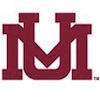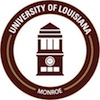Top 50 Public Pharmacy Schools in the US

 41. University of Missouri-Kansas City, School of Pharmacy, Kansas City, Missouri
41. University of Missouri-Kansas City, School of Pharmacy, Kansas City, Missouri
The University of Missouri-Kansas City (UMKC) was established in 1929. The University is home to 15,492 students, enrolled in more than 50 majors and 125 academic areas. One of the Top 75 Best Value Public Universities in the U.S., UMKC sits on 191 acre campus that ranks among the Top 100 Greenest Campuses in the nation.
Founded in 1885 as the Pharmaceutical Department of the University of Kansas City, the University of Missouri-Kansas City School of Pharmacy is a member of the American Association of Colleges of Pharmacy (AACP). The School offers the Pharm.D., and Ph.D. degrees in Pharmacology & Toxicology, and Pharmaceutical Sciences.
Resident tuition is $9,876.45 per semester for 15 credit hours and $ 20,904.95 for non-residents.
 42. University of New Mexico College of Pharmacy, Albuquerque, New Mexico
42. University of New Mexico College of Pharmacy, Albuquerque, New Mexico
The University of New Mexico sits on roughly 800 acres and it is home to 27,278 students. Established in 1889. The school is also home to an additional 7,933 students at its branch campuses and education centers. The main campus, which is home to more than a dozen colleges and schools, offers a wide variety of academic programs at all degree levels. Many are the only programs of their kind in the state.
The University of New Mexico College of Pharmacy offers the only Pharm.D. in the State of New Mexico. Established in 1945, the College also offers an M.S. in Pharmaceutical Sciences with four research concentrations. Concentrations include Pharmaceutical Policy & Outcomes, Pharmacoeconomics, Radiopharmacy, and Toxicology.
The College also offers a Ph.D. in Pharmaceutical Sciences with two research concentrations including Pharmacoeconomics and Pharmaceutical Policy & Outcomes, and a Ph.D. in Biomedical Sciences with a research concentration in Toxicology & Pharmaceutical Sciences.
Resident tuition for the University of New Mexico College of Pharmacy is $465 per credit hour for 1 to 11 hours and $5,580 for 11+ credit hours. Tuition for non-residents is $1,341.25 per credit for 1 to 11 hours and $16,099.44 for 11+ credit hours.
 43. Idaho State University College of Pharmacy, Pocatello, Idaho
43. Idaho State University College of Pharmacy, Pocatello, Idaho
Founded in 1901, Idaho State University (ISU) is a Carnegie-classified Doctoral research and teaching institution. The school, which sits on a 1,100 main campus, offers 75 percent of the state’s health profession degree programs. Home to nearly 14,500 students, Idaho State University offers more than 280 academic programs across seven colleges and schools in Pocatello, Meridian, Idaho Falls, and Twin Falls, Idaho.
Idaho State University College of Pharmacy is located at the Pocatello campus, but some programs are offered at multiple campuses and “clinical sites.” Home to nearly 300 students, the College of Pharmacy is the oldest college of Idaho State University. Offerings include the Pharm.D. at the Pocatello or Meridian Idaho campuses. Year four may be completed at the any of the college's Idaho-based clinical sites in Boise, Pocatello, or Coeur d’Alene, or in Reno, Nevada
Idaho State University College of Pharmacy also offers M.S. and Ph.D. degrees in Pharmacology, Pharmaceutics, and Drug Discovery & Development and several dual degree programs. Dual offerings include the Pharm.D./MBA, Pharm.D./M.S., and the Pharm.D./Ph.D. A Minor in Pharmaceutical Sciences is also available as well as a Nontraditional (distance) Pharm.D. program.
Resident tuition for Idaho State University College of Pharmacy is $8,614 per semester and $16,780 per semester for non-residents.
 44. University of Rhode Island College of Pharmacy, Kingston, Rhode Island
44. University of Rhode Island College of Pharmacy, Kingston, Rhode Island
The University of Rhode Island (URI) is the state’s current land, sea, and urban grant public research institution. Established in 1892, the school sits on a 1,200-acre campus just 29 miles from Providence, Rhode Island, and 79 miles from Boston, Massachusetts.
Home to around 16,000 students, the University of Rhode Island offers 80 majors across four campuses.
The College of Pharmacy is home to more than 700 students. Offerings include the Pharm.D. and M.S. and Ph.D. degrees in Pharmaceutical Sciences with multiple specializations. These include Medicinal Chemistry & Pharmacognosy, Pharmaceutics & Pharmacokinetics, Pharmacoepidemiology & Pharmacoeconomics, and Pharmacology & Toxicology. The College also offers a B.S. in Pharmaceutical Sciences and several joint degree programs.
Joint offerings include the Pharm.D./MBA, Pharm.D./M.S, and a Pharm.D./B.A. in French. Resident tuition is $11,532 for 9-15 credits, $23,606 for non-residents, and $17,298 for New England residents.
 45. University of Montana Skaggs School of Pharmacy, Missoula, Montana
45. University of Montana Skaggs School of Pharmacy, Missoula, Montana
The University of Montana is of only five public universities that rank among the Top 20 Public Universities in Producing Rhodes Scholars. It is also one of the Nation’s 377 Top Institutions for Undergraduate Education by Princeton Review. Established in 1893, the school sits on 236 acres across two campuses and it is home to 15,000 students enrolled in more than 200 majors and degrees. This includes the Pharm.D. program offered at the Skaggs School of Pharmacy.
Established in 1907 at Montana State College, the Skaggs School of Pharmacy was transferred to the University of Montana in 1913. Consisting of two departments including Pharmacy Practice and Biomedical & Pharmaceutical Sciences, the Skaggs School of Pharmacy is now part of the University of Montana College of Health Professions & Biomedical Sciences. In addition to the Pharm.D., the School offers M.S. and Ph.D. degrees in Medicinal Chemistry, Toxicology, and Biomedical & Pharmaceutical Science.
The cost to attend the University of Montana Skaggs School of Pharmacy includes tuition, fees, and the “pharmacy tuition surcharge.” Tuition for Montana residents is $11,455 per year and $28,170 per year for non-residents.
 46. Auburn University Harrison School of Pharmacy, Auburn, Alabama
46. Auburn University Harrison School of Pharmacy, Auburn, Alabama
Established in 1856, Auburn University was the first land-grant college in the South. The University, which was originally named East Alabama Male College, is now a co-educational school with a student population of 25,134. One of the few schools to be designated a land, sea, and space grant university, Auburn University offers more than 140 degree programs across 13 colleges and schools—including the School of Pharmacy.
The competitive Auburn University Harrison School of Pharmacy offers several programs for aspiring pharmacists. The School offers the Pharm.D. and M.S. and Ph.D. degrees in Pharmacy Care Systems and Pharmacal Sciences. The School of Pharmacy also offers a Graduate Certificate in Medical Chemistry.
Tuition for the Harrison School of Pharmacy is $5,283 per semester for both residents and non-residents.
 47. East Tennessee State University Bill Gatton College of Pharmacy, Johnson City, Tennessee
47. East Tennessee State University Bill Gatton College of Pharmacy, Johnson City, Tennessee
East Tennessee State University (ETSU) was established in 1911 as East Tennessee State Normal School. The school, which was named a “Best Southeastern College” by Princeton Review, sits on a 366-acre main campus and it is home to 15,000 students. East Tennessee State University has five campuses and one on the way—ETSU at Kingsport Downtown, and it houses 11 schools and colleges. Among them is the Bill Gatton College of Pharmacy.
The Bill Gatton College of Pharmacy is “one of only 19 institutions in the U.S. and the only one in Tennessee with colleges of pharmacy, medicine, nursing, and public health on the same campus.” The College, which welcomed its first class in 2007, offers the Pharm.D. a Ph.D. in Pharmaceutical Sciences, and an introductory Pharmacy Practice Experience.
Tuition for the Bill Gatton College of Pharmacy at ETSU is $31,756 per year or $15,878 per semester (9 months). Tuition rates are the same for residents and non-residents.
 48. Ferris State University College of Pharmacy, Big Rapids, Michigan
48. Ferris State University College of Pharmacy, Big Rapids, Michigan
Founded in 1884 as the Big Rapids Industrial School, Ferris State University sits on an 880-acre campus and it has 19 additional sites across the State of Michigan and at the school's Kendall College of Art and Design in Grand Rapids. The school is home to more than 14,000 students enrolled in 180+ programs across eight colleges.
The Ferris State University College of Pharmacy is the “principle source of pharmacy practitioners in the State of Michigan.” Accredited by the Michigan Board of Pharmacy since 1893, the College offers the Pharm.D. degree. Resident tuition for the Pharm.D. program is $591 per credit hour and $887 per credit hour for non-residents.
 49. University of Toledo, College of Pharmacy & Pharmaceutical Sciences, Toledo, Ohio
49. University of Toledo, College of Pharmacy & Pharmaceutical Sciences, Toledo, Ohio
Established in 1872, the University of Toledo is home to 23,000 students enrolled in more than 300 academic programs. The school, which sits on a 400-acre campus, houses an impressive 17 colleges. One of the University’s oldest colleges is the is the College of Pharmacy & Pharmaceutical Sciences.
Established in 1904, the College of Pharmacy & Pharmaceutical Sciences ranks among the nation's Top Pharmacy Schools by U.S. News and World Report. The College offers a wide variety of programs for those wishing to enter the pharmaceutical industry. Offerings include the Pharm.D., a M.S. and Ph.D. in Medicinal Chemistry, a Ph.D. in Experimental Therapeutics, and a M.S. in Pharmaceutical Sciences with programs in Pharmacology/Toxicology, Industrial Pharmacy, and Health Outcomes and Socioeconomic Sciences (formerly Pharmacy Health Care Administration).
The College also offers a B.S. in Pharmaceutical Sciences with a variety of majors including Cosmetic Science, Medicinal and Biological Chemistry, Pharmaceutics, Pharmacology/Toxicology, and Pharmacy Administration, and a B.S./M.S. in Medicinal Chemistry. A Pharmacology/Toxicology Certificate is on the menu as well.
Resident tuition for the Pharm.D. program is $7,863.85 per year for Professional Years 1-2, $6,204 for Year 3, and $13,818.33 for Year 4. Non-resident tuition is $16,983.84 per year for Professional Years 1-2, $11,321.28 for Year 3, and $25,252.87 for Year 4.
Graduate tuition is $6,517.80 per semester for Ohio residents and $11,634.84 per semester for non-residents.
 50. University of Louisiana-Monroe College of Pharmacy, Monroe, Louisiana
50. University of Louisiana-Monroe College of Pharmacy, Monroe, Louisiana
Established in 1931, the University of Louisiana-Monroe (ULM) is part of the University of Louisiana system. The system is made up of nine universities and 92,198 students. This makes the University of Louisiana system the largest in the State of Louisiana. Nearly 10 percent of the system’s students attend the University of Louisiana-Monroe.
The University, which sits on a 238-acre campus, offers 40 academic programs across five colleges and a Graduate school. One of the school’s top colleges is the College of Pharmacy. Louisiana’s only state supported pharmacy program, the College of Pharmacy consists of four academic departments including Basic Pharmaceutical Sciences, Clinical & Administrative Sciences, Toxicology, and Graduate Studies.
Offerings include the Pharm.D., and Ph.D. degrees in Toxicology, Clinical and Administrative Science, Medicinal Chemistry, Natural Product Chemistry, Pharmaceutics, and Pharmacology. The College also offers a B.S. in Toxicology.
Resident tuition for the Monroe College of Pharmacy is $9,915 per semester and $18,764 per semester for non-residents. Undergraduate tuition is $3,159 per semester for residents and $8,445 per semester for non-residents.
Pages

- Facebook Like
- Google Plus One
- 272004 reads


